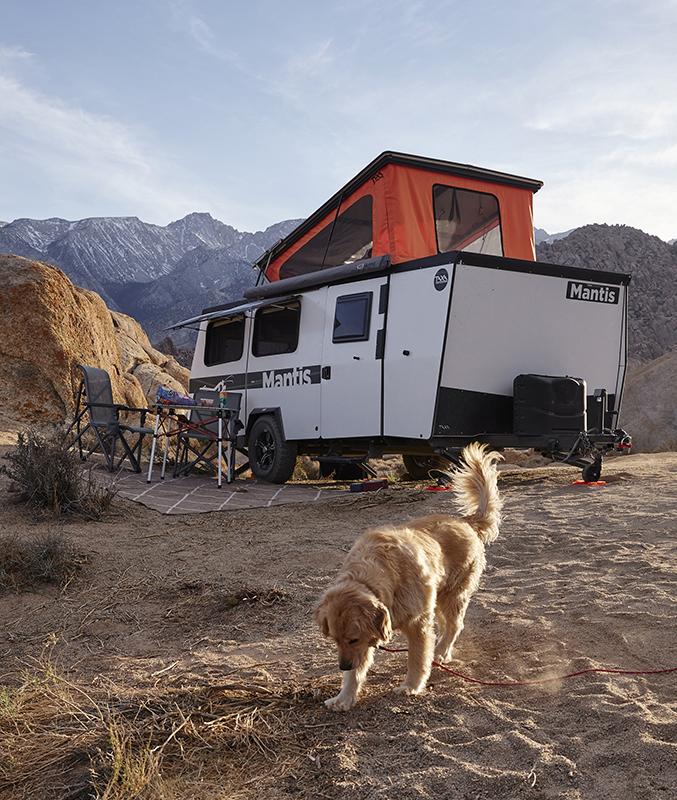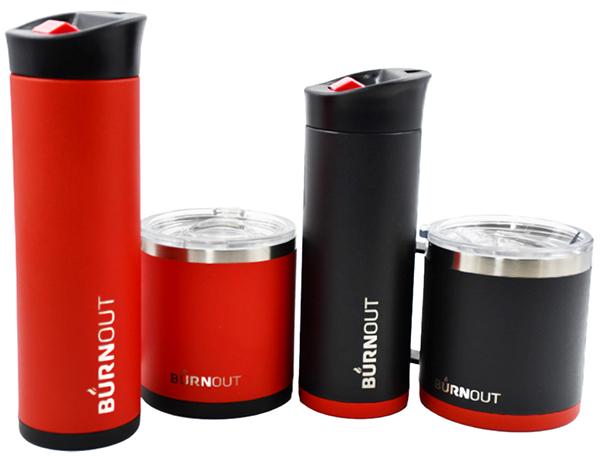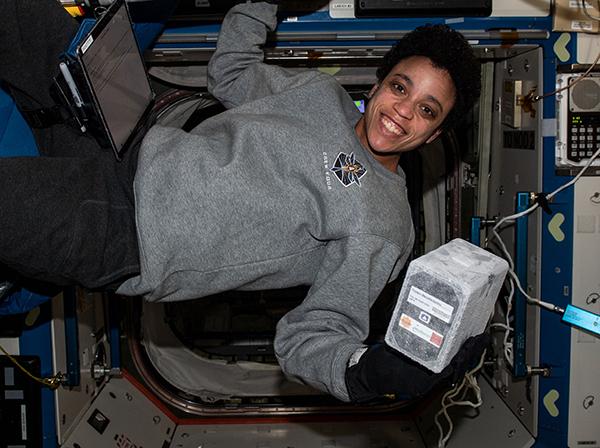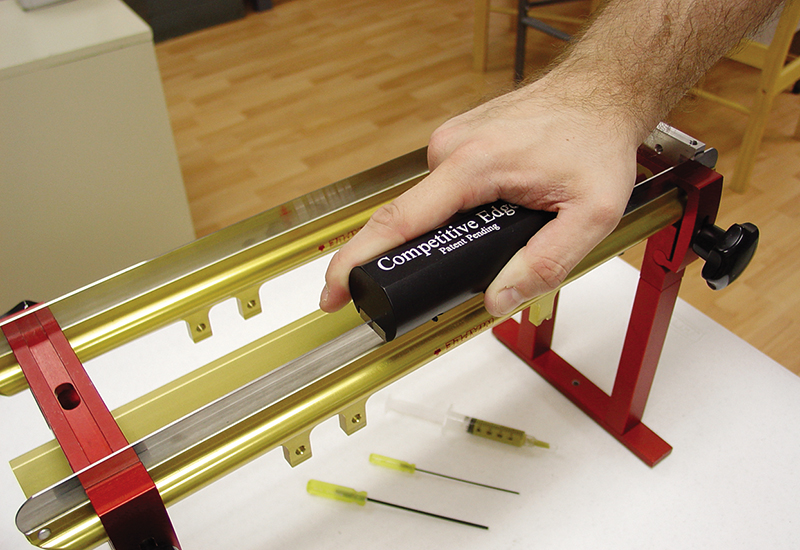
A Gold Medal Finish
In February of 1998, the U.S. Speedskating Team was coming off of a performance that yielded a silver medal and a bronze medal at the Winter Olympic Games in Nagano, Japan. Determined to win the coveted gold medal, the skaters looked ahead, setting their sights on a stronger showing at the 2002 Salt Lake City, Utah, games. As fate would have it, the "competitive edge" the team would need to live out these dreams would come compliments of the founder of a company by the same name—in collaboration with NASA.
During the summer of 1999, Darryl Mitchell of Goddard Space Flight Center's Technology Commercialization Office (TCO) met with the U.S. Olympic Committee at the official training facility in Colorado Springs, Colorado, to offer assistance in transferring NASA technologies applicable to Olympic sports. Following the meeting with the Olympic committee, Mitchell was approached by U.S. Speedskating Long Track Program Director Finn Halvorsen, who eagerly voiced his interest in working with NASA to identify a means of improving performance for his team. According to Halvorsen, "If [NASA] can put a man on the moon, surely they can help our skaters."
The U.S. Speedskating organization was looking for new ways to enhance skate technology to ensure that its athletes are the first across the finish line. Areas of possible improvement included reducing the weight of the skate by using new composite materials for the leather boot, adjusting foot positioning for better functionality, and providing better glide and grip for the 1-millimeter-wide skate blade.
Taking these potential advancements into consideration, Mitchell and Halvorsen went to work uncovering NASA technologies that could boost the U.S. team's skating capabilities. Mitchell received a crash course in speedskating, and as a result, generated a lengthy list of promising NASA developments that could benefit the sport. From this list, he and his Goddard TCO partner, Joe Famiglietti, deliberated over whether a NASA mirror-polishing technique could possibly be adapted to the athletes' speedskates. The polishing technique, developed by Jim Lyons, a 16-year optical engineering veteran of Goddard, was derived from the same principles used to create the optics for NASAs science observatories, such as the Hubble Space Telescope (highly polished optics are required by NASA to obtain sharp, clear images in space). Lyons, who left Goddard to start up his own optical systems company, PROSystems, Inc., coined his technique "aluminum super polishing." He describes the process as one that allows the polishing of a bare aluminum mirror to create a high-quality aluminum optic that's extremely lightweight and user-friendly.
Lyons and the Goddard TCO team quickly determined that the aluminum super polishing technique was not suitable for speedskate enhancement. This discovery, however, was hardly a setback, as Lyons came through with an alternative polishing process. To gauge the effectiveness of the new procedure, Mitchell and Famiglietti handed Lyons a pair of speedskating blades to see if he could put a shine on the actual edge of each blade. Lyons not only provided the shine, but created a polishing tool used in the blade-sharpening process that improves glide. "For ice skating, the purpose is to reduce the surface roughness, and therefore, you reduce the coefficient of friction, which gives the skate an improved glide," Lyons offers as an explanation for his polishing process.
The new process, which Lyons notes is an extension of how speedskaters typically sharpen their blades, begins by securing a pair of skates in a jig. A sharpening stone is run over the blades, followed by other sharpening tools, each with a progressively finer roughness. During sharpening, a burr begins to form on the blade edge. The burr is removed with a special stone, and the skate blades are ready for polishing.
To prepare the polishing tool, a combination of a polishing compound and a standard lubricating oil is used. When injected through the ports of the tool, the fusion saturates a polyethylene-impregnated felt pad at the bottom, which then comes in contact with the 1-millimeter-thick surface of the blade. The polishing tool is then rubbed quickly and vigorously along the blade, taking just 30 to 60 strokes to improve its edge. Lyons says that the polishing compound, when combined with an abrasive and the pressure applied to the blade, produces a chemical reaction that works to remove surface ridges called "high peaks." He adds that this rough-to-smooth refurbishing procedure is "like comparing a gravel driveway to a finely paved two-lane highway."
The new polishing tool was subjected to a series of glide tests at the Pettit National Ice Center in Milwaukee, Wisconsin, in September of 2001. Speedskates polished with the tool demonstrated an improvement of about 15 percent in unassisted glide over conventionally sharpened skates—like those used in the Nagano Games. Despite the extraordinary results, work was still far from over, and research continued over the next few months.
With the Salt Lake City Winter Olympics just 3 weeks away, Lyons and the PROSystems polishing team finalized a design that met their expectations, and set off to Salt Lake City to work with Halvorsen and the U.S. skaters. Speedskater Chris Witty, the winner of the only two U.S. medals in Nagano, agreed to try the polishing tool. During the trial run, Witty immediately recognized a difference, admitting to an unmistakable increase in speed. On February 17, 2002, she used her newly-polished blades to skate the 1,000-meter race, and glided to victory with a world-record time and a gold medal. In subsequent races, American short- and long-track speedskaters who used the polishing tool also shared a spot with Witty on the winners' podium.
Lyons has since started a second business called Competitive Edge Co., to continue development of the polishing technology for use on skis and in other ice sports like bobsledding, luge, and skeleton. The company is also investigating the possibility of making the jump from the ice rink to the race track with prospective applications in NASCAR and Indy Car Racing.
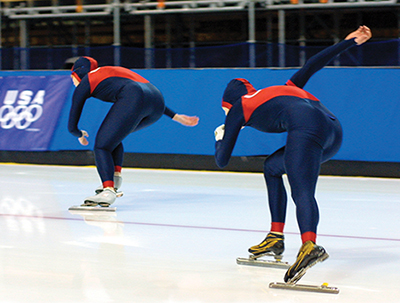
After bringing home a silver medal and a bronze medal in the 1998 Winter Olympic Games, the U.S. Speedskating organization looked to NASA for new ways to enhance skate technology and ensure that its athletes are the first across the finish line.

The polishing process, invented by former Goddard Space Flight Center optical engineer Jim Lyons, is an extension of how speedskaters typically sharpen their blades. Following use of a sharpening stone and other sharpening tools, the polishing tool is rubbed quickly and vigorously along a skate blade, taking just 30 to 60 strokes to improve its edge.









